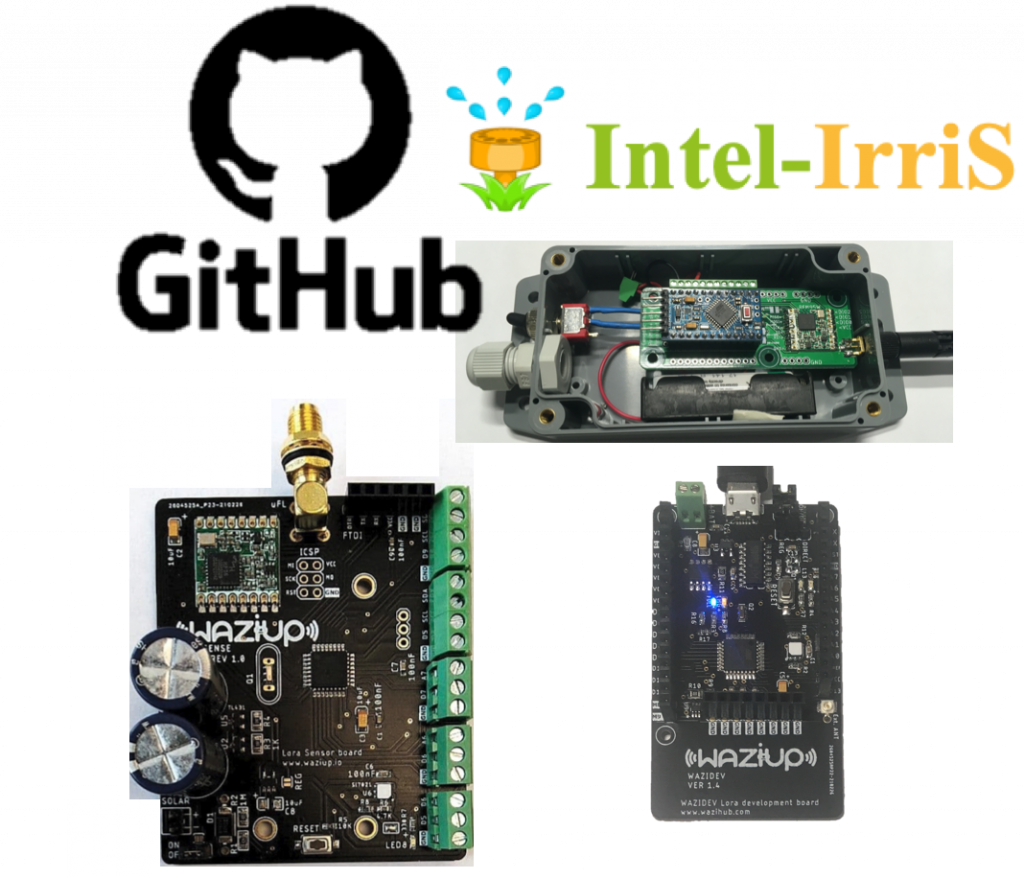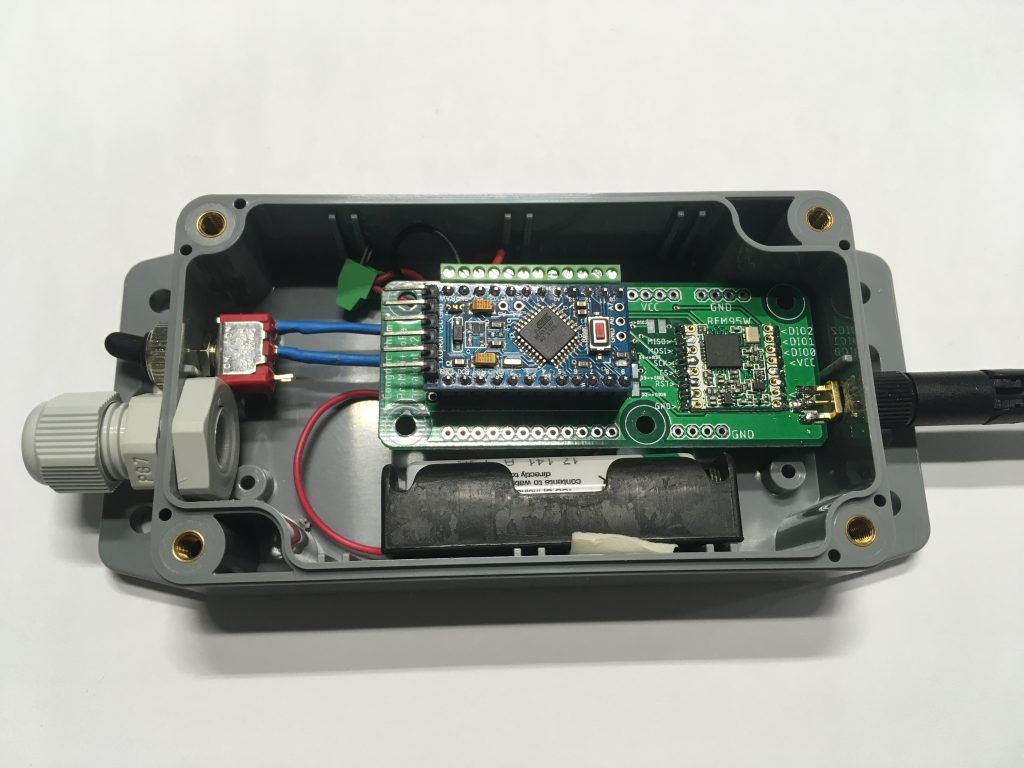Results
Pinned results
INTEL-IRRIS capacity-building program on WaziLab Learning Center
IoT Irrigation for Small Farms


this is where all the source code, the Gerber, BOM and CPL files for the PCBs and all the tutorials slides can be found to build your own INTEL-IRRIS platform!

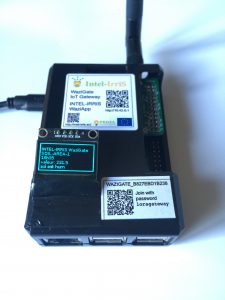

The INTEL-IRRIS WaziGate SD card image for EU433 band (RaspberryPi 3B/3B+ or 4B, 3B+ recommended)
- Test the latest INTEL-IRRIS SD image based on WaziGate v2 software: more robust, more edge-computing features, better WiFi support,…
- works out-of-the-box with the INTEL-IRRIS starter-kit
- includes the embedded INTEL-IRRIS Irrigation WaziApp Application (IIWA)
- includes Home Assistant for fully customizable dashboard and more sensor integration functionalities. See this post for Home Assistant.
- there is only one SD card image version (default in 868MHz) that can be easily configured for EU433
- an auto-configuration feature is implemented to automatically configure INTEL-IRRIS gateway on boot
- for instance, see how to auto-configure for 433MHz frequency band
Main results
Here is a summary of main results. The News section provides an exhaustive list of chronologically ordered news & results
2024
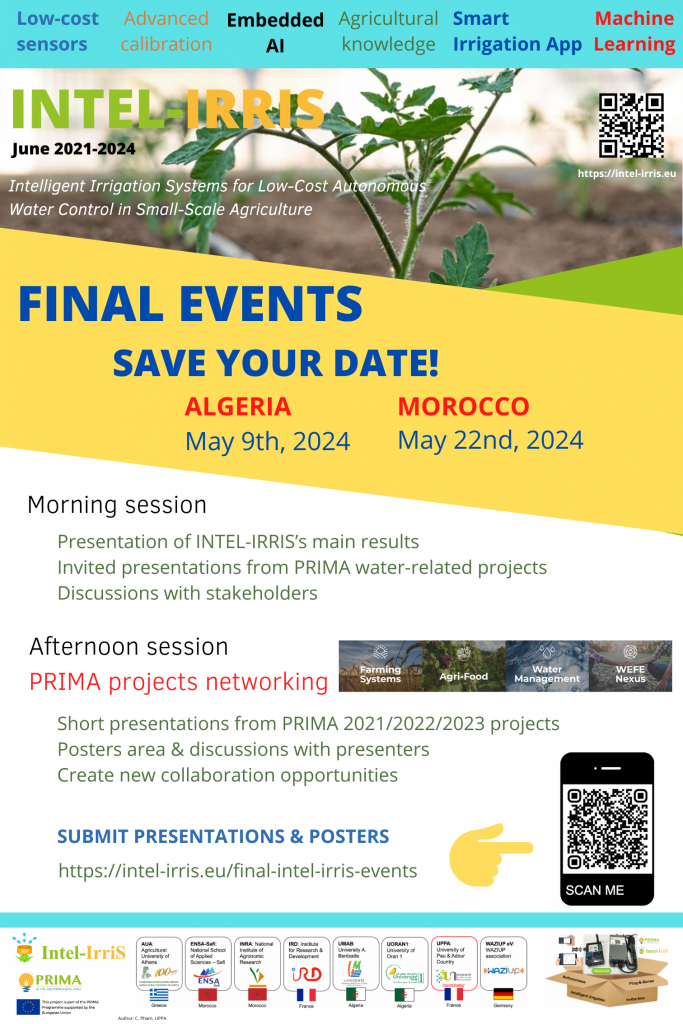
Sep. 27th, 2024. Finally, the first set of manufactured IRD PCBA v5 from JLCPCB has been received! They are working great and enable out-of-the-box deployment of full LoRaWAN compliant soil sensor devices! Look at the last update of PCB v5 tutorial.


Jan. 2024. In the starter-kit v3, the sensor device is based on fully assembled PCB with embedded solar panel charging features. 2 boards are available to build the starter-kit v3. The first one is the evolution of the INTEL-IRRIS do-it-yourself PCB and is referred to as INTEL-IRRIS PCBv4.1. Keeping the simple approach where a separate Arduino Pro Mini microcontroller board needs to be plugged on the PCB, it is illustrated below. The second one is the WazoSense v2 proposed by WAZIUP e.V.
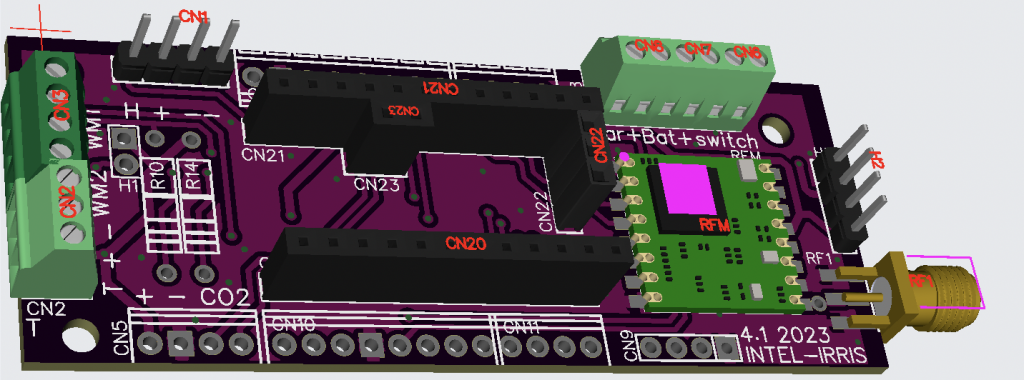
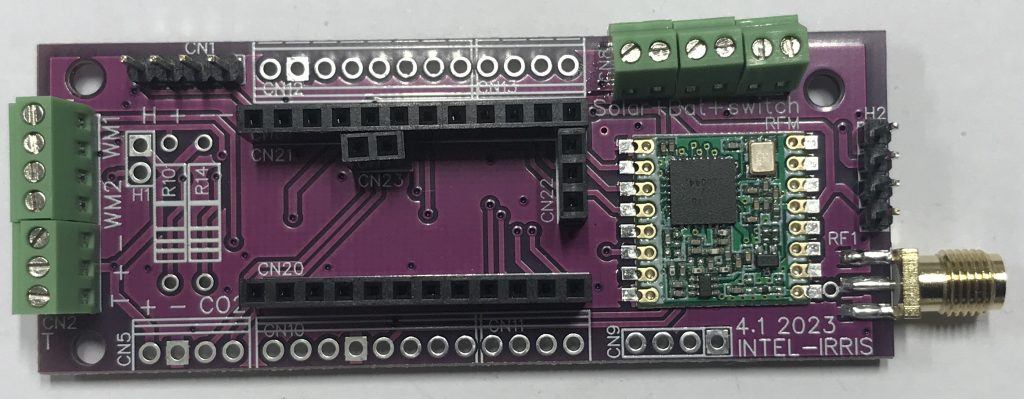
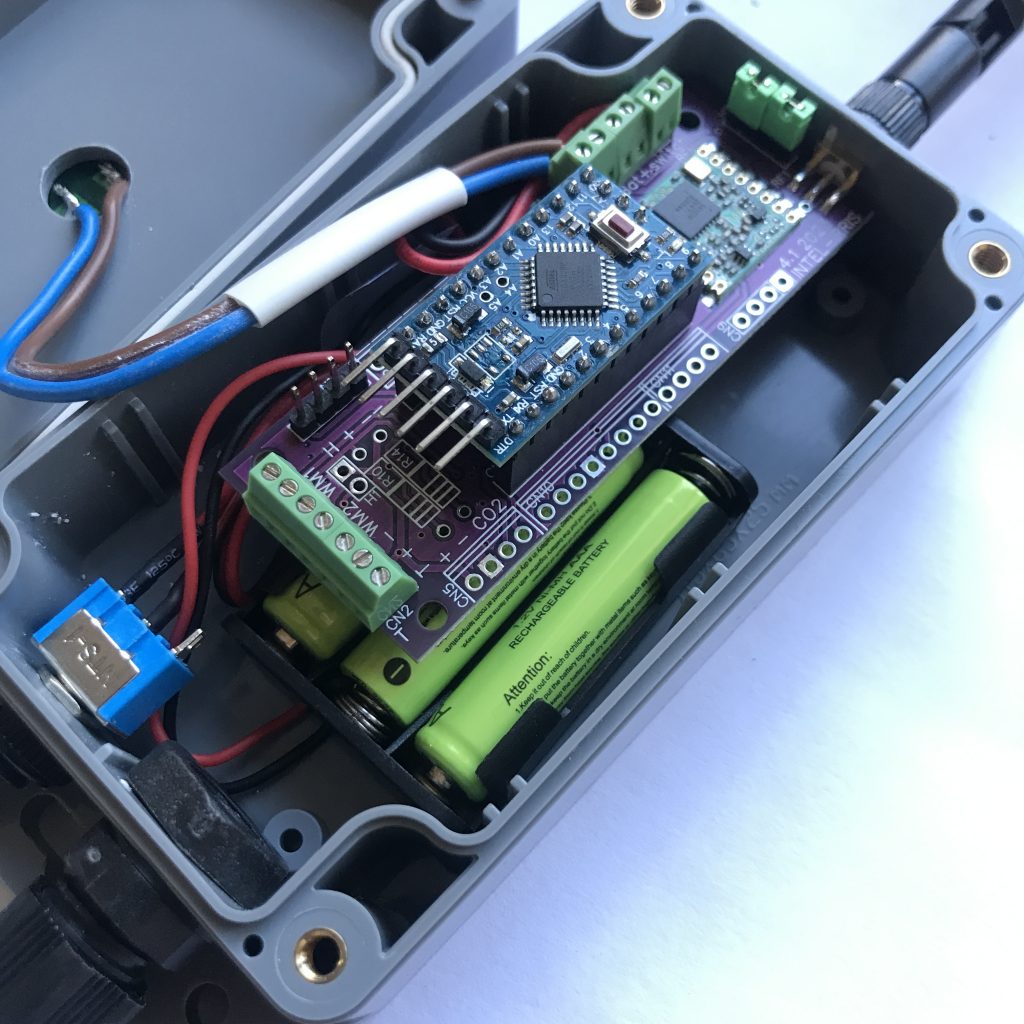
2023
Sep. 22th, 2023. New PCBs are available to simplify wiring of sensors and have advanced functionalities such as solar charging capabilities and full LoRaWAN connectivity. Keeping the open-source and low-cost design approach, the PCBs Gerber files are freely available on the INTEL-IRRIS GitHub and therefore can be ordered directly from PCB manufacturers.
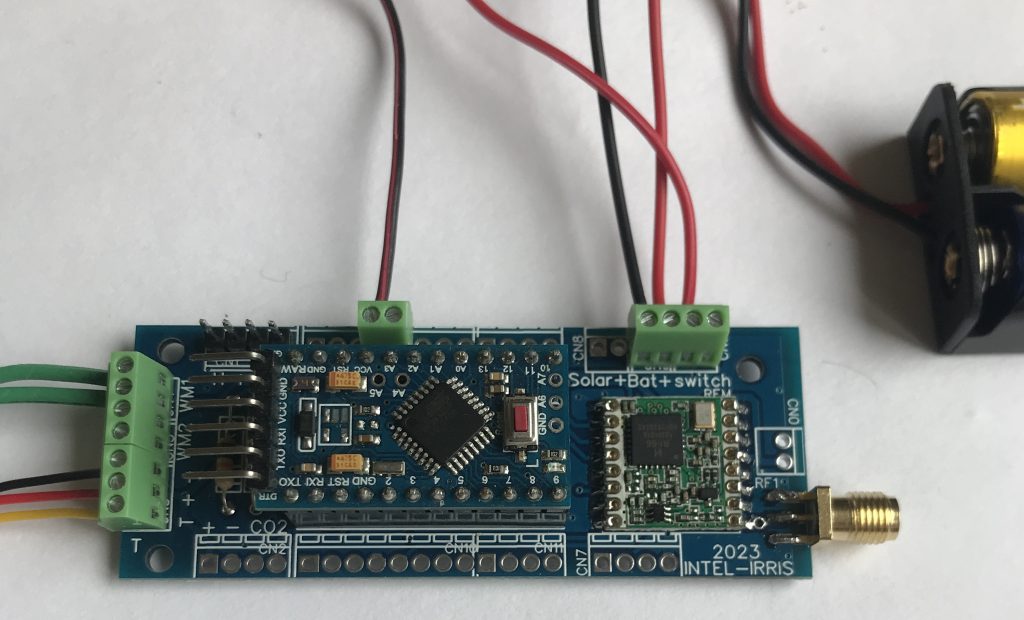
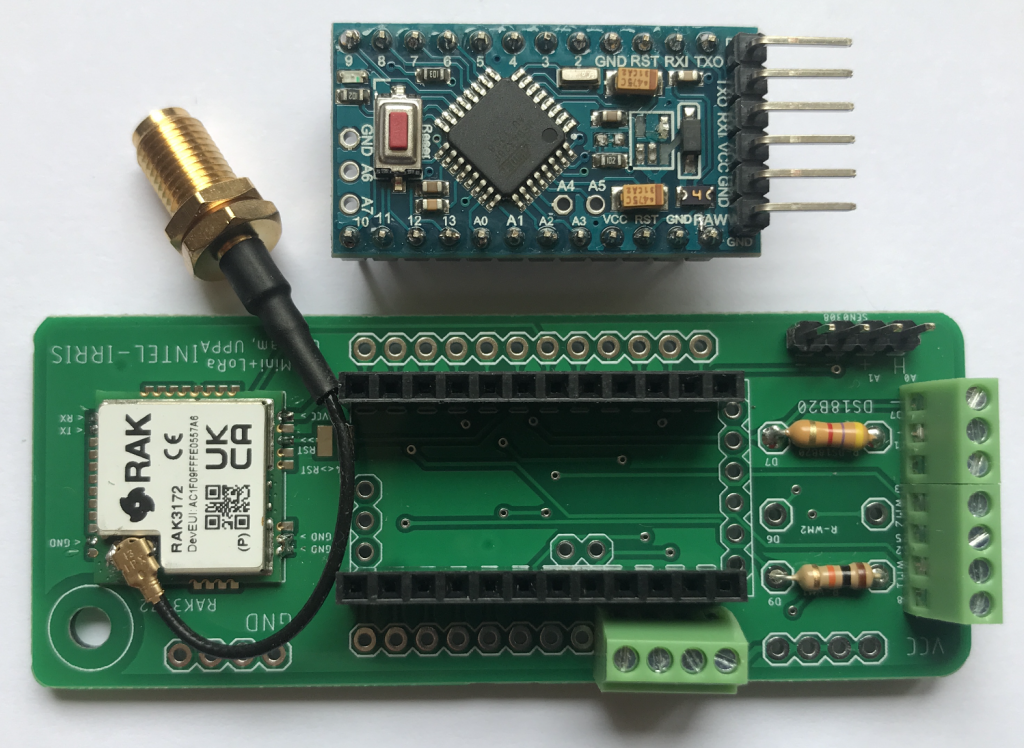
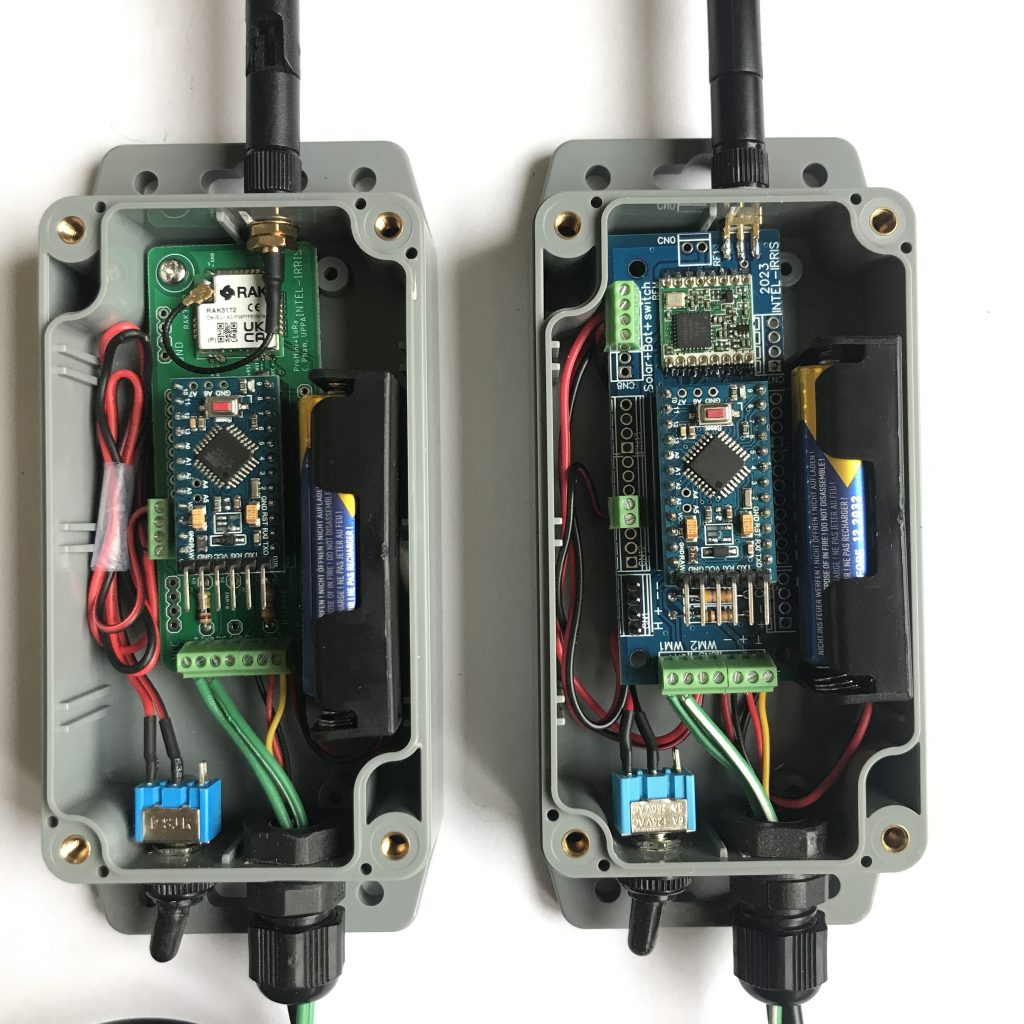
May 15th, 2023. INTEL-IRRIS proposes a simple LoRaWAN Field Tester to easily check if your deployed device is in range with your INTEL-IRRIS WaziGate. The Field Tester device can be built from the generic INTEL-IRRIS device sensor by flashing the dedicated Field Tester program and attaching a small OLED screen. Read more information on INTEL-IRRIS GitHub.

April 4th, 2023. Several technical meetings with agricultural partners lead to the new version of the INTEL-IRRIS Irrigation WaziApp Application (IIWA) developed jointly by WAZIUP e.V. and UPPA: new user interface, more intuitive configuration menu, more parameters,…
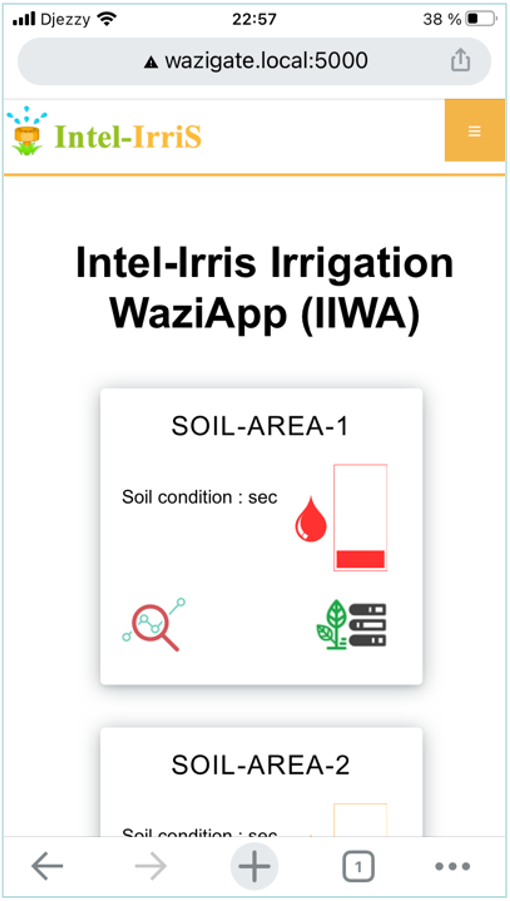
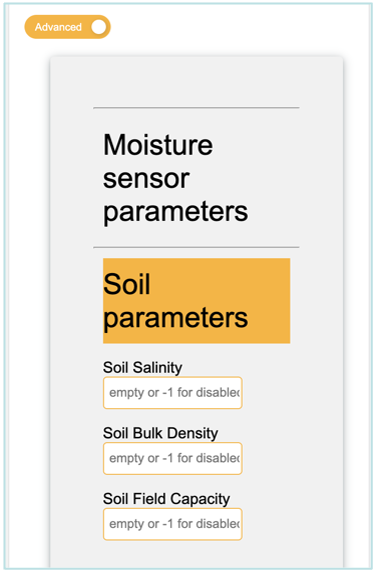
March 7th, 2023. Live demo of the INTEL-IRRIS starter-kit with the new IIWA embedded application dashboard during the Mostaganem event.
SOIL-AREA-1 is the capacitive soil humidity sensor while SOIL-AREA-2 and SOIL-AREA-3 are Watermark soil humidity sensors. SOIL-AREA-2 is at 15cm depth and SOIL-AREA-3 is at 30cm depth. Soil texture is mostly sandy for this test setting.
The animated GIF below has been accelerated. The irrigation process took about 5mins in real time where about 25L of water have been used. The sensors were monitoring and transmitted every 1min for the live demo.


2022

Sept. 5th, 2022. A prototype of the embedded INTEL-IRRIS Irrigation WaziApp Application (IIWA) developed jointly by WAZIUP e.V. and UPPA is ready for testing. The latest INTEL-IRRIS WaziGate SD card image already includes IIWA.
Embedded on the INTEL-IRRIS WaziGate gateway, IIWA adds sensor calibration and agronomic/agricultural knowledge to provide more accurate irrigation notifications: sensor type, soil type, plant type,… can be defined to better calibrate the low cost soil humidity sensors.
When connected to the INTEL-IRRIS WaziGate’s WiFi, test it quickly by connecting to http://wazigate.local:5000 or http://10.42.0.1:5000
Resources:
- IIWA GitHub: https://github.com/Waziup/smart-irrigation-waziapp/tree/intelirris
- IIWA tutorial slides
- IIWA video: to come
June 9th, 2022. FIRST dissemination event to showcase INTEL-IRRIS’s starter-kit in Morocco!
The challenges of smarter irrigation have been explained to smallholders & stakeholders and the INTEL-IRRIS’s low-cost approach as well as the INTEL-IRRIS’s starter-kit have been presented at an event organized by INRA CRRA SETTAT at the experimental domain of Sidi Aidi. Program of the event.
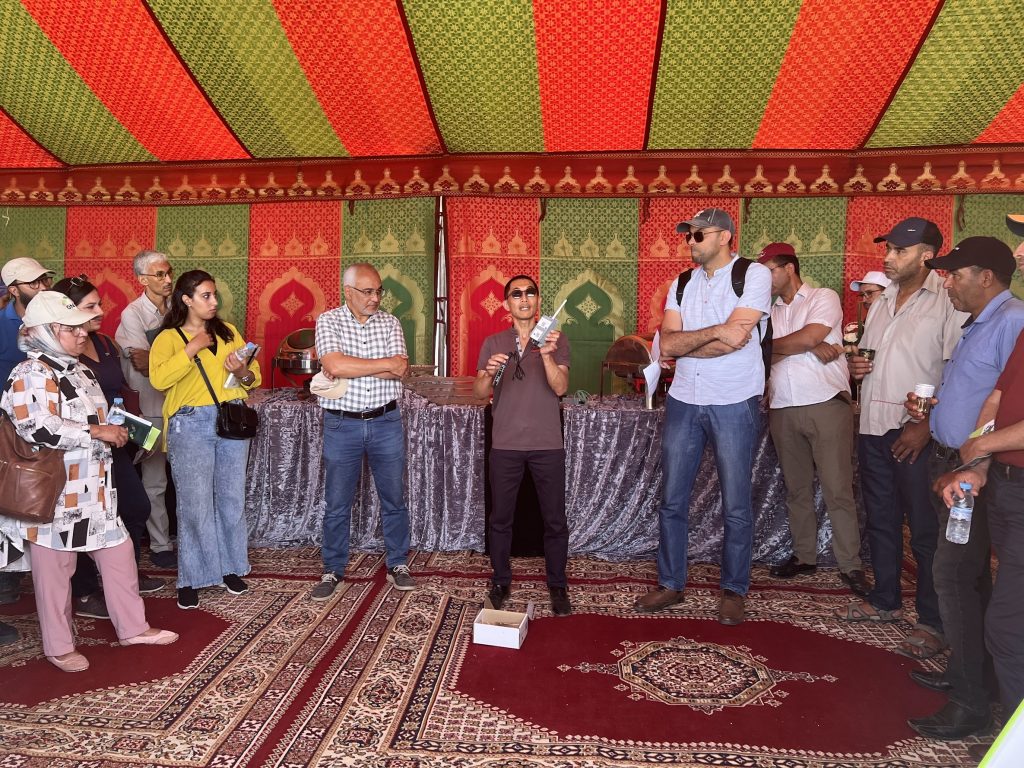
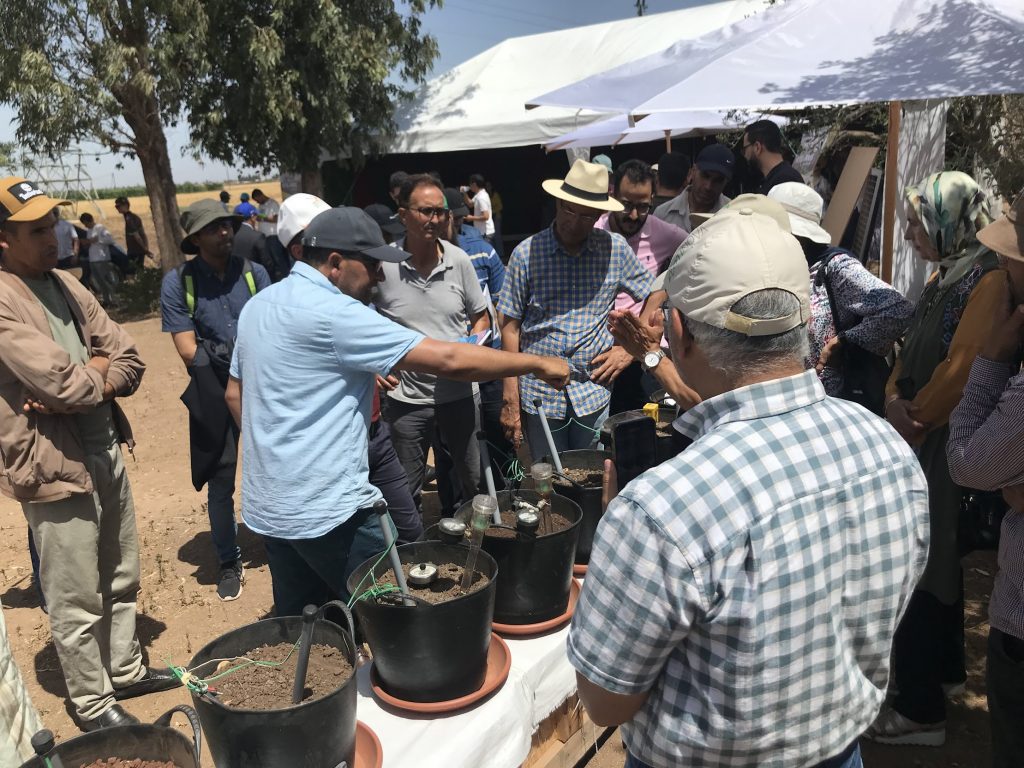
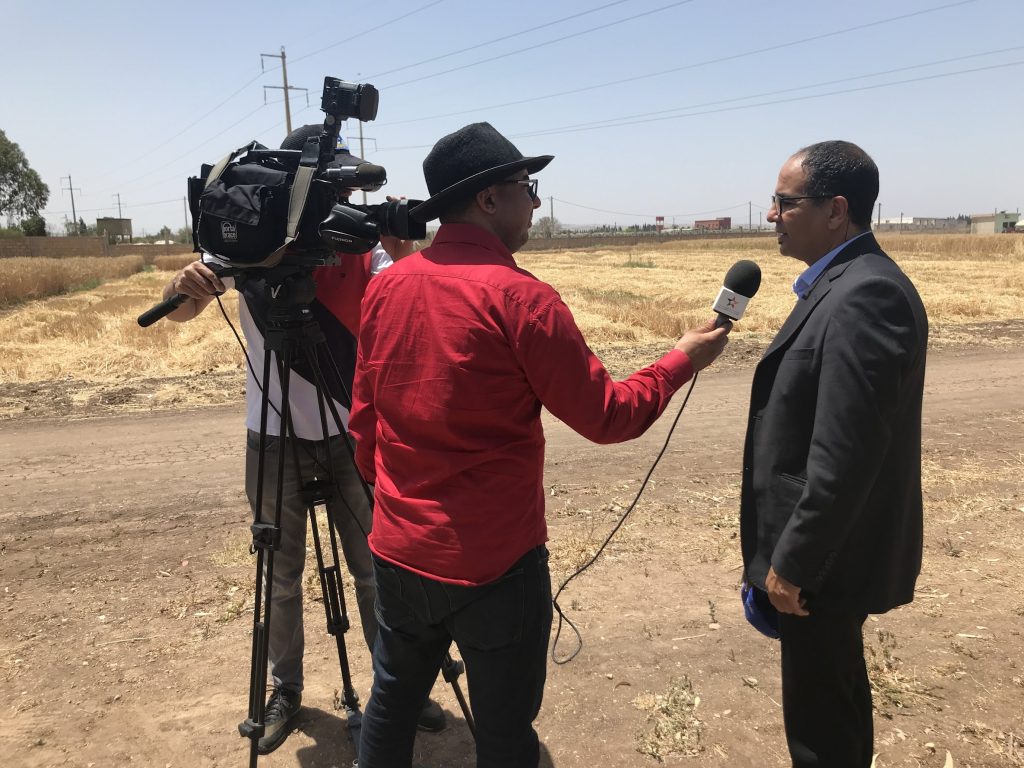
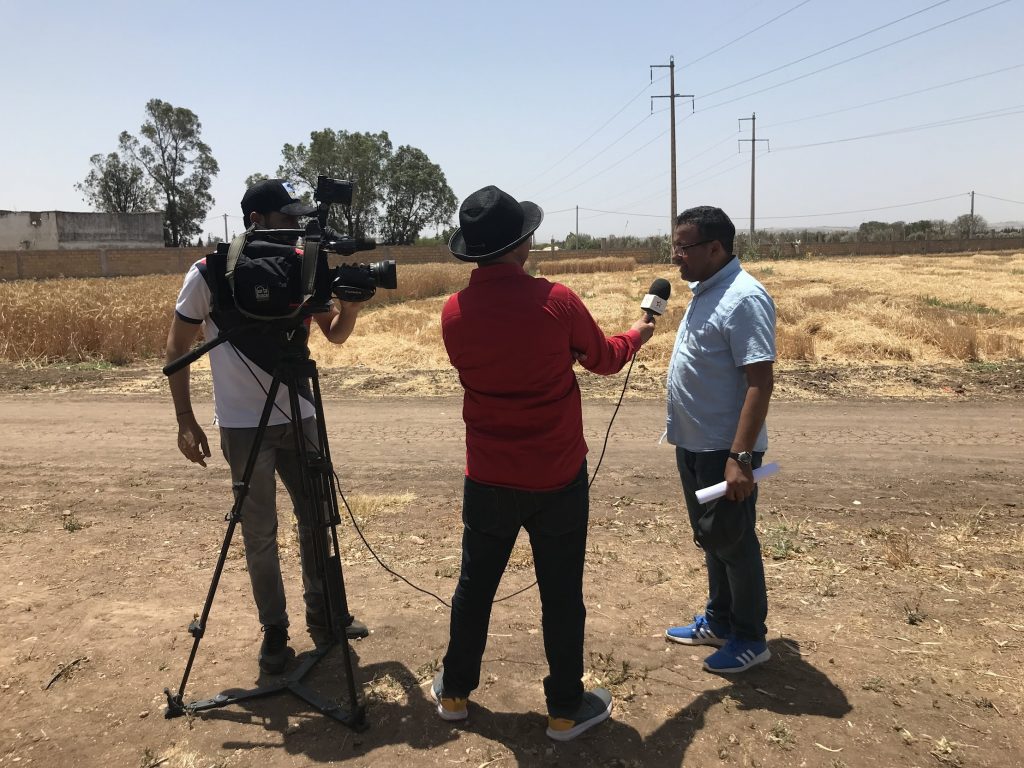
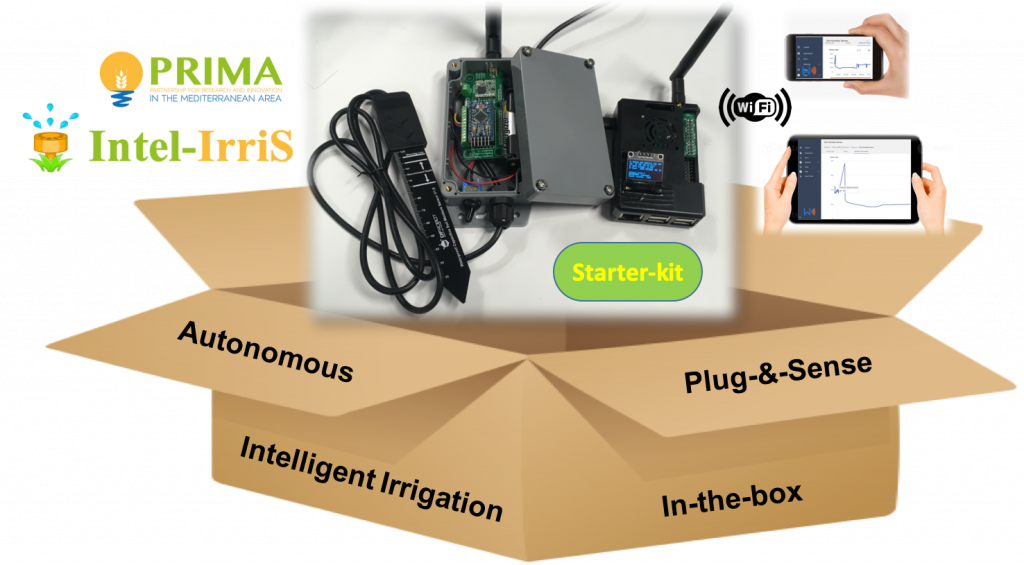
Feb. 17th, 2022. The INTEL-IRRIS starter-kit is ready to be tested by project partners, and especially our agriculture specialists, before we go for larger production and deployment in piloting sites. Hardware parts have been validated and software components have been successfully tested! 4 instructional videos have been produced to show how to build, test and deploy the starter-kit!
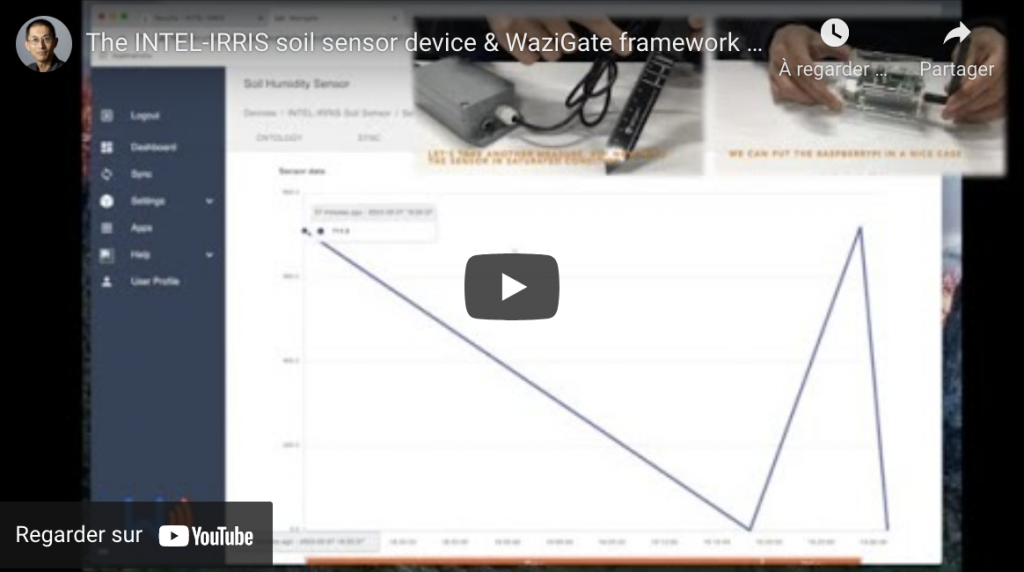
Feb. 12th, 2022. Fourth tutorial video demonstrating the INTEL-IRRIS soil sensor device & WaziGate framework for intelligent irrigation in-the-box. See the video on YouTube (https://youtu.be/j-1Nk0tv0xM).
This instructional video is mainly for our Moroccan and Algerian partners to deploy the INTEL-IRRIS starter-kit.
Feb. 1st, 2022. Third tutorial video showing how to connect the soil humidity sensor and test LoRa transmissions to the Edge IoT gateway. See the video on YouTube (https://youtu.be/n0YGan7_vUc).
This instructional video is mainly for our Moroccan and Algerian partners to build the INTEL-IRRIS LoRa IoT soil sensor device and perform technology adaptation.
Jan. 27th, 2022. Second tutorial video showing how to build the IoT microcontroller platform for the INTEL-IRRIS outdoor LoRa IoT soil sensor device. See the video on YouTube (https://youtu.be/3jdQ0Uo0phQ).
This instructional video is mainly for our Moroccan and Algerian partners to build the INTEL-IRRIS LoRa IoT soil sensor device and perform technology adaptation.
Jan. 25th, 2022. First tutorial video showing how to build the INTEL-IRRIS outdoor LoRa IoT soil sensor device. See the video on YouTube (https://youtu.be/zcazzDbXvHk).
This instructional video is mainly for our Moroccan and Algerian partners to build the INTEL-IRRIS LoRa IoT soil sensor device and perform technology adaptation.
2021
Nov. 30th, 2021. The source code of the generic IoT sensor platform is on Intel-IrriS’s GitHub. It can handle up to 2 soil humidity sensors.
It supports DIY Arduino ProMini, WaziSense and WaziDev development lines. For WaziSense and WaziDev, the embedded I2C SI7021 sensor can be activated to measure conditions in the device casing, as well as the solar charging circuit (WaziSense) or battery voltage level (WaziDev).
It can be configured as LoRaWAN 1.0 device for both uplink and downlink transmissions.

Feb. 17th, 2022. The INTEL-IRRIS starter-kit is ready to be tested by project partners, and especially our agriculture specialists, before we go for larger production and deployment in piloting sites. Hardware parts have been validated and software components have been successfully tested! 4 instructional videos have been produced to show how to build, test and deploy the starter-kit!





